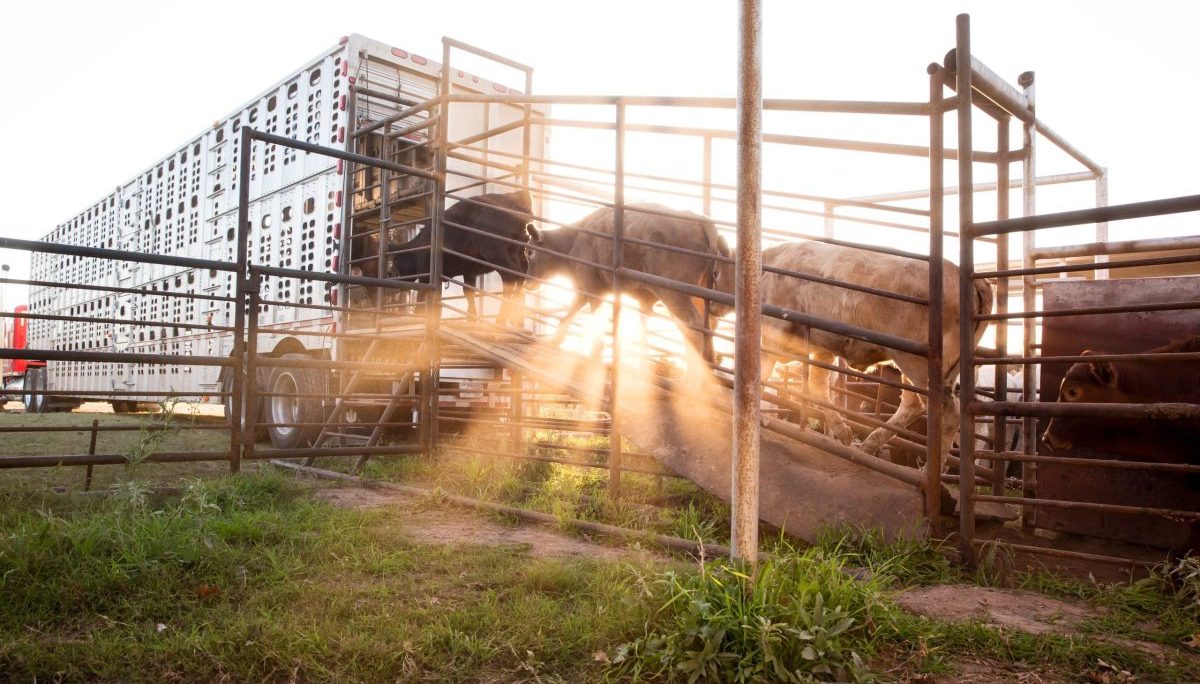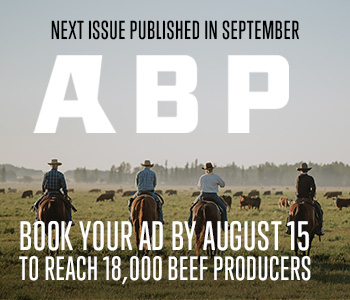AB Direct - Steers
Rail: 495.00-500.00 del
AB Direct - Heifers
Rail: 495.00-500.00 del
US Trade- Steers
Rail: ---
US Trade - Heifers
Rail: ---
Canadian Dollar
0.12

Conditioning is key to transport success
The results of a four-year animal transport research study, funded in part by ABP, suggest the most important animal welfare factor in transport may be conditioning before they get on the truck.
Since we last reported on this story in January 2022, researchers have completed their final year of a study to help improve animal welfare outcomes by determining the effects of animal conditioning and rest stops when cattle are transported long distances.
Stricter livestock transport regulations came into force in Canada in February 2022, reducing the length of time animals can travel between rest stops from 48 to 36 hours and increasing the length of the rest stops required from five to eight hours.
After four years of study, researchers found that rest stops had minimal impact on animal welfare. “What we consistently found through all of these experiments is that the biggest difference was in conditioned versus non-conditioned calves. If I had bet on it before we did these studies, I would absolutely not believe what we found here. It was pretty eye-opening for us,” says Dr. Karen Schwartzkopf-Genswein, Principal Research Scientist, Beef Cattle Physiology and Welfare with Agriculture and Agri-Food Canada in Lethbridge, who led the study with research associate Dr. Daniela Melendez.
The final year of study explored a gap in prior research relating to how far cattle were transported after a rest. “In our previous studies, we didn’t find that rest had much of an effect. But typically, animals transported a long distance will go 15 or 16 hours and then have a rest, and then travel another 15 or 16 hours to their final destination. In our previous two studies, we only looked at four hours of transport following the rest,” Schwartzkopf-Genswein explains.
In the latest study, Schwartzkopf-Genswein looked at health and welfare outcomes in 500 to 600-weight calves following transport. The calves studied included both conditioned and non-conditioned animals from the same ranch. Conditioned calves were weaned, vaccinated, and adapted to a backgrounding diet for 18 to 26 days before the study started, while non-conditioned calves were weaned and loaded. They were transported for 20 hours, given a rest of either zero hours or eight hours, and then transported another four or 15 hours.
Animal measurements were taken at the initial loading onto the truck, following unloading at the rest stop, just prior to reloading at the rest stop, at their final destination, and five times afterward (days 1, 2, 3, 4, and 14) with the last check being 28 days after transport. Researchers looked for indicators of reduced welfare based on both physiological and behavioural measurements, including immune function, muscle fatigue, infection and trauma, use of fat reserves, dehydration, stress, lameness or injury, mortality, and morbidity.
“In every one of these studies, I was expecting that we would see a difference in either rest duration on calf health and welfare, or as a result of the post-rest transport duration,” says Schwartzkopf-Genswein. “But in this study, we saw very little impact in calves rested zero or eight hours, nor much difference on the impact of the rest whether they traveled four hours or 15 hours afterward.”
Among calves transported four hours after their rest, those rested eight hours had greater shrink than those not rested, regardless of whether they were conditioned or not. However, in those calves transported an additional 15 hours after their rest, shrink was greater in the conditioned animals given eight hours rest compared to conditioned calves given no rest or non-conditioned calves rested zero or eight hours. Both findings can be explained by the fact that, when animals eat and drink well, they have more gut fill and water retention to lose.
The shrink was temporary, and animals came back from it quickly. “When we look at dry matter intake, the major difference we see is between conditioned and non-conditioned calves. Overall, conditioned calves had higher dry matter intake for the first three days post-arrival, and numerically they stayed higher until about two weeks at the feedlot,” Schwartzkopf-Genswein says.
The only impact of rest was seen on the first day after arrival, where conditioned calves rested eight hours had higher intake than conditioned calves provided no rest or non-conditioned calves that were rested or not rested. Another interesting finding was that all non-rested calves had higher gains than rested calves between 14 and 28 days after transport due to compensatory gain. Says Schwartzkopf-Genswein, “Rest didn’t have the impact we thought it would. Overall, it didn’t help nor hinder them.”
The most consistent finding of the research over four years of study was the impact of conditioning prior to transport. “The results suggest that the rest stop and the difference in transport time after the rest really didn’t make a big difference. The thing that made the difference was whether the animals were conditioned prior to transport. The findings tell me that conditioned calves are more ready and fit to accept transport stress than non-conditioned animals,” Schwartzkopf-Genswein says.
Schwartzkopf-Genswein would like to do future research to break down the components of preconditioning to see which are most impactful for transport and welfare outcomes and to look at the impact of driver versus animal rest regulations on vulnerable cattle like cull cows.
As a result of these four years of study, Schwartzkopf-Genswein’s recommendation for producers is to support conditioning prior to transporting animals. “If I could tell producers one thing, it’s that animals—in this case calves—have to be in good condition when they enter the trailer. The better conditioned they are when they go on, the better the outcome is for the transport, and this finding likely applies to all classes of cattle,” she concludes.
Learn more about all three experiments in ABP Research Showcase Highlights | Getting the science on rest stops.
This article was first published in Volume 3 Issue 2 of ABP Magazine (June 2023). Watch for more digital content from the magazine on ABP Daily.


